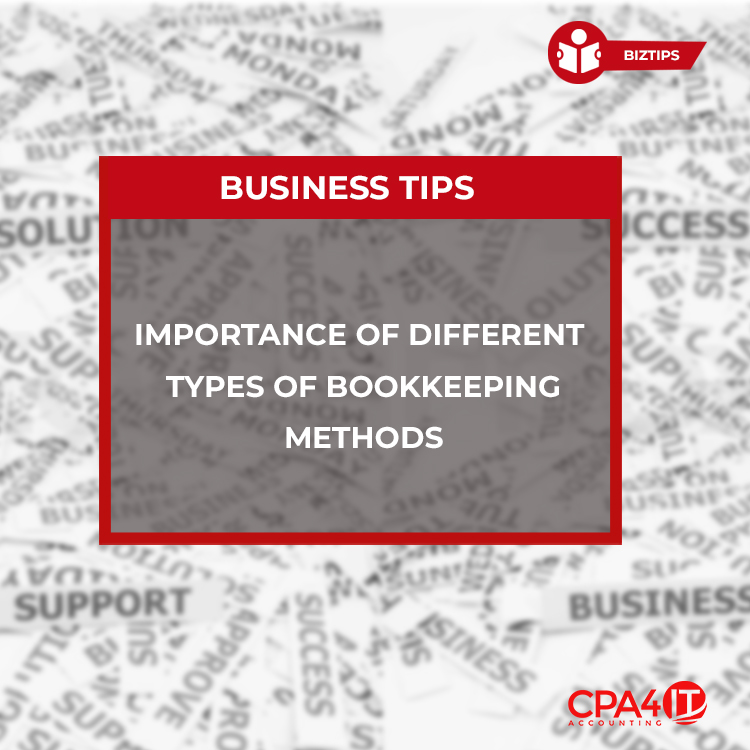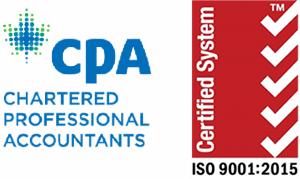Manual Bookkeeping
Manual bookkeeping is the “traditional” way of preparing and documenting your business’ financial records. In this method, you might use a pen-and-paper ledger, or an offline program like Microsoft Excel or Word to record income, expenses, interest, and any of the other cash flow items that appear in a financial report. The manual method can work if you prefer a hands-on approach, but it can also be time consuming, and it leaves more room for human error.
Online Bookkeeping Method
Online bookkeeping uses software that takes care of most of the calculations and data entry for you. A program like QuickBooks cloud accounting software, for example, can help you track income and expenses much faster than you could with a traditional ledger.
It’s also possible to link your cloud accounting software to other financial programs that your business uses, like your online banking or mobile payment apps. With all your software linked through the cloud, payments that you make and receive can be automatically recorded to a digital ledger. The software program can then make the calculations for you, giving you an accurate picture of your total income and spending that’s updated every time your money moves.
QuickBooks cloud accounting software also has options for payroll, expense tracking, and inventory. A program like this makes it a lot easier to check your records on your laptop or smartphone even when you’re out of the office.
What is the Difference Between Single-Entry and Double-Entry Bookkeeping?
In single-entry bookkeeping, each transaction is recorded as a single entry in a ledger, while in double-entry bookkeeping, a transaction is recorded twice. For example, if you make a $30 sale, in the double-entry system that transaction could be recorded as a gain in your income ledger, and as a deduction to the total value of your inventory.
Single-entry bookkeeping is simpler — you only have to record each transaction once. This can be sufficient for very small businesses that aren’t incorporated. For example, if you work full time but have a side business selling handmade jewelry, single-entry bookkeeping is probably enough to record your profits and expenses from that side business, so you can claim the amounts on your taxes.
However, if your business is incorporated, or if it’s your sole source of income, the single-entry method just won’t cut it. The double entry method leaves less room for error, making it the better choice for balancing complex books. Plus, it’s really not that much more complicated. With the help of cloud accounting software for small-business bookkeeping, you can pretty much automate the process.
Keep in mind, single-entry bookkeeping’s simplicity doesn’t allow for GAAP conformation. This inability to conform to GAAP’s requirements may not apply to very small businesses which only need to be able to illustrate a method of meeting reporting requirements for taxes and employees. Any company that must highlight cash flow retained earnings, or any other changes in a position financially must use a double-entry accounting system.
The LIFO Accounting Method
What is LIFO accounting? LIFO means Last In, First Out. It is one of the methods you can use to determine the current worth of your inventory if you operate a retail business. This accounting method presumes that your most recent (last in) products will be the first to sell (first out). If your inventory costs fluctuate between the first and last items, this bookkeeping method helps keep the most accurate records possible.
If you manufacture goods, your inventory accounting entries will reflect several stages of completion. If you produce wooden furniture, some of your inventory may be unfinished wood products, furniture currently on the assembly line, and finished pieces. In your ledger, the finished goods inventory will reflect the number of each type you have at any time.
After some of your finished items have sold, you can track the cost of goods sold by including all direct costs. This can be done using the traditional method or with activity-based costing. You can figure both your direct and indirect costs by performing a cost assignment to each type of good you produce or service you provide.
The FIFO Accounting Method
FIFO accounting, or first-in, first-out, is a method of valuing inventory. It’s basically an assumption for cost-flow purposes that states the first goods you purchased are the first goods you sold. This assumption most closely resembles an actual flow of products earning it the distinction as the most correct valuing method in theory. Consider your local supermarket — the first gallons of milk the store purchased to sell to customers are the first gallons sold usually. Otherwise, a lot of milk (product) would spoil, thus creating a loss for the store.
When creating the company’s balance sheet, the FIFO method of valuation offers costs that most closely resemble the costs most recently incurred. On the other hand, it also matches older costs of inventory purchases against revenues currently coming in, which means revenue vs. cost is not necessarily properly reflected, resulting in a potentially higher than actual gross margin.
Whichever accounting method you choose, the best way to make sure you’re dotting your i’s and crossing your t’s is to maintain order in the way you manage your bookkeeping. You can do so by implementing GAAP.
Book your FREE consultation today!
Still not sure about how to organize your Bookkeeping? Don’t worry. We’ve got you covered! Our team of expert accountants will take care of all your financial responsibilities to put you in a healthy spot. Our goal is to help you organize your finances, create wealth, and transform that wealth into a legacy. Don’t forget to click here and book a FREE consultation with our team of experts to discuss this further.







